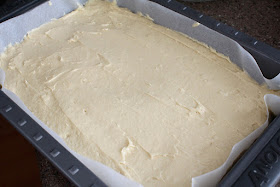If you ask me what my favourite meat is, my answer is pork.
This is kind of predictable because I’m Asian and for some reason or another all Asians like eating pork. It's like in our blood or something.
There is a Cantonese saying that goes “giving birth to a slab of char siu would have been better”. Parents say this to their children when expressing their disappointment in them. It roughly translates to and means – “if I had char siu at least I could eat it, but you, your useless.”
But why char siu?
Char siu is one of many famous Chinese BBQ meats that you’ll see hanging out the front of Hong Kong style BBQ restaurant windows. There is also roast duck aka siu ngaap or soy sauce chicken aka see yu gai. So why would people say that they would rather give birth to char siu and not siu ngaap or see yu gai?
I asked my parents if they knew where this saying originated from and they didn’t know. I had grown up hearing this saying, I’d often hear it on Cantonese TV shows and movies in family dramas. I then asked my parents why pork and not duck or chicken. It didn’t take us long to figure out why you would want to say “giving birth to a slab of char siu would have been better” and not siu ngaap or see see yu gai because duck is slang for a male prostitute in Cantonese and chicken is what you call a female prostitute… why? I don’t know, but don’t ever say out loud you are calling chicken or duck in Cantonese, it could get awkward.
This makes me think of the time when I was in Japan with my friends Karen and Crispin in 2010 and we were at an izakaya with some of Karen’s Japanese friends. We let the locals order and they asked us what we felt like eating which was met with “I’m easy, order whatever you like”. Karen’s Japanese friends asked what we meant by “I’m easy” and we explained to them that it means we will accept anything that they order. So they started repeating out loud “I’m easy” like it was some cool new English saying they had just learnt and then we realized that they should be careful with saying I’m easy because as with calling chicken or duck in Cantonese, it could get misconstrued and get awkward!
“giving birth to a slab of char siu would have been better”
Well this isn’t char siu, I already have a recipe for char siu on my blog which happens to be my most popular blog post but this is one of my other favourite pork dishes – claypot pork belly.
This is the kind of dish I love eating in winter. Pork. Fat. What else do I need to keep me warm?
Enjoy :)
Claypot Pork Belly
(An original recipe by the Blue Apocalypse)
Ingredients
• peanut oil
• 1 kg pork belly, thinly sliced
• 4-5 slices of ginger
• 2 shallots, sliced
• 3 cloves garlic, finely chopped
• 3 stalks spring onion, cut into 2 inch lengths (I only use the bottom third)
• 10-12 dried red chillies (soaked in hot water until soft and deseeded)
• 3 tablespoons oyster sauce
• 4 teaspoons dark soy sauce
• 2 teaspoons light soy sauce
• 1 ½ cup chicken stock
• 2-3 tablespoons Shaoxing wine
• 1-2 teaspoons sesame oil
• salt and sugar
Method
Heat 2-3 tablespoons of peanut oil in a wok and fry the dried red chillies until the oil is coloured red and the chillies are crispy. Then add in the ginger slices and fry together until fragrant.
Add in the shallots, garlic and fry until the shallots have softened
Add in the sliced pork belly and fry until it starts to brown. Then add in oyster sauce, dark soy sauce, light soy sauce and fry everything together so that the pork is coated with the sauce. Deglaze with Shaoxing wine and then add in the chicken stock.
Heat up a claypot and transfer the pork from the wok to the claypot. Bring to boil, cover with lid and simmer for 1-1 ½ hours until the pork is tender and the sauce has thickened.
Stir occasionally and add more water or stock if the sauce dries up.
Add the spring onions, cook for a further 5 minutes and season to taste with a little salt and sugar. Add in the sesame oil last and mix together just before serving.
Serve with steamed rice.
Here are some of my other pork belly recipes:
- Braised pork spare ribs with pumpkin
- Vietnamese braised pork belly with eggs in coconut juice (Thit Heo Kho Trung)
- Twice cooked pork (Sichuan style)
- Roasted pork belly - sui yuk
- Kakuni (Japanese Braised Pork)
- Braised pork belly with daikon
- Chinese BBQ Pork
- Communist Pork (Red Cooked Pork)
- Baki Kecap (Indonesian braised pork in sweet soy sauce)






















